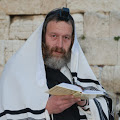Judaism: Mysticism, Magic, and Kabbalah
 Rabbi David Azulai
Rabbi David Azulai
Black Magic, Jewish mysticism, Kabbalah - Kabbalistic Comments Off on Judaism: Mysticism, Magic, and Kabbalah
Judaism, one of the world’s oldest monotheistic religions, is renowned not only for its rich religious and ethical traditions but also for its profound mystical and magical facets. At the heart of this esoteric dimension of Judaism lies Kabbalah, a mystical and magical system that has fascinated scholars, seekers, and mystics for centuries. In this exploration of Judaism’s Mysticism, Magic, and Kabbalah, we will delve into the origins, principles, and enduring influence of these mystical practices.
The Mystical Underpinnings of Judaism
Mysticism: The pursuit of direct communion with the divine, often through contemplation, meditation, and spiritual experiences.
Mysticism in Judaism is a journey toward deeper spiritual understanding and communion with the divine. It transcends the boundaries of conventional religious practice and delves into the hidden aspects of the universe, the nature of God, and the inner workings of the human soul.
Mystical Traditions in Judaism:
Judaism’s mystical traditions date back thousands of years, with elements found in the Hebrew Bible (Tanakh), the Talmud, and other sacred texts. Some of the core mystical themes include:
The Quest for Divine Union: Mystics seek to experience a profound connection with God, often described as the divine union. This involves transcending the limitations of the physical world to attain spiritual closeness with the divine presence.
Revelation and Ecstasy: Mystical experiences are often marked by revelations, ecstasies, and visions. Prophets, like Ezekiel and Isaiah, had mystical encounters with God, often involving surreal visions.
The Inner God: Mysticism in Judaism emphasizes the indwelling divine spark within each individual. This belief underscores that every person has a piece of the divine within them.
Asceticism and Devotion: Many mystics practice asceticism, devotion, and rituals to cleanse the soul and prepare for divine encounters. Fasting, meditation, and prayer are common practices.
The Role of Magic in Jewish Tradition
Magic: The use of supernatural or mystical forces to influence events or outcomes.
Jewish magical practices have evolved over the centuries, often interwoven with mystical traditions. Jewish magic is distinct from sorcery and witchcraft, emphasizing positive outcomes, healing, protection, and divine intervention.
Types of Jewish Magic:
Several forms of Jewish magic have emerged, each with its unique purposes and methods:
Practical Kabbalah: A branch of Kabbalah, Practical Kabbalah seeks to harness the divine through rituals, incantations, and amulets. Practitioners may use it to invoke angels, ward off evil, or heal the sick.
Amulets and Talismans: Amulets are objects, often inscribed with sacred text or symbols, believed to offer protection. Jewish amulets are used for a variety of purposes, from warding off the evil eye to ensuring safe childbirth.
Healing and Divination: Jewish magic includes healing spells, often based on biblical verses and names of God. Divination practices such as “casting lots” have historical roots in Judaism.
Exorcism and Demonology: In cases of possession or malevolent spirits, Jewish exorcism rituals are performed, invoking the name of God and reciting verses from the Torah to cast out evil entities.
Kameot: These are protective charms with mystical inscriptions, used to safeguard against harm or misfortune.
The Enigma of Kabbalah
Kabbalah: A form of Jewish mysticism that seeks to explore the hidden and spiritual aspects of the universe, God, and the soul.
Kabbalah, often referred to as the “inner Torah,” is a mystical tradition within Judaism that explores the mysteries of the divine and the hidden dimensions of reality. It has intrigued scholars, mystics, and seekers for centuries.
Origins of Kabbalah
Kabbalah’s origins can be traced to the Jewish mystical traditions of the 12th century in Provence, France, and Spain. It later flourished in the mystical city of Safed in Israel during the 16th century. Kabbalah’s central text, the “Zohar,” attributed to Rabbi Shimon bar Yochai, is a cornerstone of Kabbalistic thought.
Key Concepts in Kabbalah
Kabbalah introduces profound concepts and symbols, including:
Ein Sof: The concept of the “Infinite,” representing the unknowable, transcendent aspect of God.
Sefirot: The ten divine emanations that reveal aspects of God’s nature. They are depicted in the Tree of Life, a central symbol in Kabbalah.
Divine Names and Language: The power of divine names, letters, and language in creating and shaping reality. The mystical use of Hebrew letters is central to Kabbalah.
Merkavah Mysticism: Focusing on visions of God’s heavenly throne (merkavah), often experienced in altered states of consciousness.
Theurgy: Rituals, invocations, and practices to invoke divine energies for spiritual transformation.
Kabbalah in Practice
Kabbalah is not merely a theoretical pursuit; it involves practical applications, rituals, and practices to engage with the divine and bring about personal transformation. Some common practices in Kabbalah include:
1. Meditation and Contemplation:
Kabbalists engage in deep meditation and contemplation to connect with the divine. They may contemplate the divine names, Sefirot, or the Tree of Life to gain insights and spiritual elevation.
2. Prayers and Incantations:
Specific prayers, often recited in Hebrew, are used to invoke divine energies and blessings. These prayers may be accompanied by specific hand gestures or body postures.
3. Amulet and Talisman Crafting:
Kabbalists create amulets and talismans inscribed with sacred names and symbols to provide protection, healing, or guidance. These objects are believed to channel divine energies.
4. Theurgy and Rituals:
Theurgy, or ritual magic, is performed to invoke divine beings, such as angels, for guidance and assistance. These rituals are often guided by specific instructions from Kabbalistic texts.
5. Study of Sacred Texts:
Kabbalists diligently study sacred texts, including the Zohar and the writings of earlier Kabbalists, to deepen their understanding of the mystical tradition.
The Ethical Foundations of Kabbalah
Kabbalah places a strong emphasis on ethical conduct and personal transformation. Ethical principles are intertwined with mystical practices and magical rituals. Key ethical principles include:
1. Tikkun Olam (Repairing the World):
Kabbalists view their actions as contributing to the repair and perfection of the world. Ethical behavior and compassionate acts are central to this concept.
2. Humility and Self-Reflection:
Self-examination, humility, and moral improvement are integral to Kabbalah.
admin @ February 1, 2010
Order Protection Talisman Now

